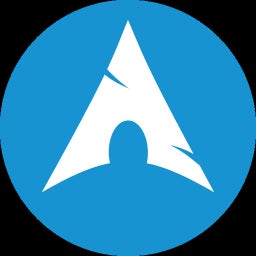

My stuff is all in docker-compose with a stack/service structure, so listing it is as simple as running tree, and reading the individual YAML files if I need in-depth details.


My stuff is all in docker-compose with a stack/service structure, so listing it is as simple as running tree, and reading the individual YAML files if I need in-depth details.


What you want are two servers, one for each purpose. What you are proposing is very janky and will compromise the reliability of your services.


Solid advice. Good to mention too: use btrfs as filesystem for a better experience with Timeshift.


If you have an interest in Arch, I’d recommend starting with a derivative distro like EndeavourOS. It’ll give you an easy installation process and a desktop that’s ready to use.
Then just use it as your daily driver. You’ll eventually run into the occasional issue when package X or Y upgrades and breaks something, learn to fix that, and eventually learn the “ins and outs” of Arch. That’s how I started, I went from Mint to Antergos, used that for a while, then when Antergos was discontinued (RIP) I converted my install to “pure” Arch and never looked back.


RustDesk sort of fits the bill. It’s open-source, has 2FA, can be self-hosted (but not needed), the client runs on anything, but the main issue here is that no amount of workarounds will make an untrusted machine any less untrusted, you’re essentially extending the display and input from a dubious machine into your own.
If you’re really worried about the security aspect, my suggestion would be to only use your phone as the client, and if you need to do anything more complex, use a Bluetooth keyboard connected to it. There are some foldable keyboards that don’t take too much space and are not terrible.
Just echoing what others said, Plank does not run on Wayland. You can install the “Dash to Dock” Gnome extension for a very similar experience (minus widgets). If using KDE, consider replacing Guake (which is GTK) with Yakuake (Qt).


This here OP! ☝️
Jellyfin lets you do this easily.
Mine are all anime characters. Currently I have:
Go to the fstab entry for that drive and add nofail to its options.


Running the right command on the wrong SSH session/machine.
I have a bunch of ST6000NM0095 (which are similar specs) in my NAS, and despite already being well used when I got them, so far only one needed to be replaced in nearly 5 years of (my) usage.
My only advice with these is: if you notice a maddening noise coming from them when they’re idle, update them to the latest firmware and it’ll go away.


Cool. Time to get ready for another round of broken extensions.


Amazing work, these look great!
Timeshift with BTRFS kicks ass. I have mine set for daily snapshots, retained for a week. Only the changes between snapshots are stored, so the extra disk usage is minimal, and easily justified by the peace of mind in case of fuck-ups or broken updates.
+1 for Immich. It’s the most complete and competent Google Photos replacement yet.
I don’t have the source right now, but I had the same idea not long ago, and the tl;dr is swap on a zvol is a very bad idea. If your system ever runs low on memory and actually needs to do heavy swapping, you’re setting yourself up for a catastrophe.


If they take long or don’t resolve it, try the live support chat. I used the chat inside their app to request it and it was unlocked pretty much instantly.


O2 has an on-by-default security filter that blocks all sorts of “bad stuff”. For me, it was preventing connecting to any PIA VPN servers. Ping their customer support and they can disable it for you.
I have the 2020 G14 and I got this working once. I’m afraid easy and simple are not a thing here, as you need to understand what you’re doing if you want it to work well. The basics are:
Personally, I don’t think it’s worth the hassle. I keep a Windows install for when it’s needed, and do most of my gaming on a separate system.